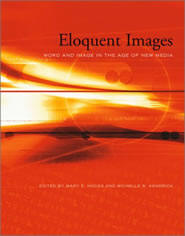
Home / Introduction / Part I / Part II / Part III / Part IV / Conclusion

IV. Identities and Cultures in Digital Designs
(Ch. 10, Ch. 11, Ch. 12, Ch. 13)
Ch. 10 "Feminist Cyborgs Live on the World Wide Web: International and not so International Contexts." (top)
Gail E. Hawisher and Patricia Sullivan
Working from their previous studies that examine how American women in college represent themselves and establish their identities online, Hawisher and Sullivan continue to consider how women outside writing studies and outside the U.S. construct identities on the web. Drawing from feminist technology theory and cultural geography, they first outline what led them to notice how women visually represented themselves online by pointing to specific examples from their earlier studies. Their new study, however, examines what happens when women take on the task of producing their own pages because, to them, women are now claiming multiple subject positions for themselves. As they describe their study's findings, Hawisher and Sullivan introduce their belief of "cyberhybridity" and provide two examples, one study of Russian women and one study of German women, which demonstrate how women take traditional representations and articulate them anew. They conclude that women use technologies for their own purposes and in so doing create cyborg identities.
Ch. 11 "Unheimlich Maneuver: Self-Image and Identificatory Practice in Virtual Reality Environments." (top)
Alice Crawford
Crawford's essay works from two questions: If it is possible to experience a frisson of self-(mis)recognition while playing a video game, how far might self-identity be morphed when one is inhabiting a character in immersive virtual reality (VR) and what would this mean, in terms of relations with ourselves and others? Exploring critical theories concerned with VR, she outlines several assumptions about VR such as the assumptions that VR leads to narcissistic regression with psychotic episodes and that VR will disconnect the identificatory process from embodiment, assumptions she believes are too simplistic. Crawford, then, argues for an ethic of spectatorship, one that values the complex experiences in VR and one that incorporates entertainment, escapism, and play in a collective search for the good life (p. 251). In other words, she is advocating a perspective that values VR as a way for participants to use images in crafting self-identification, a self-identification that is good.
Ch. 12 "Eloquent Interfaces: Humanities-Based Analysis in the Age of Hypermedia." (top)
Ellen Strain and Gregory VanHoosier-Carey
Cultural studies scholars Strain and VanHoosier-Carey take a look at humanities-based computing which they believe began when "writers and scholars first used the computer as an environment in which to explore humanities thinking as it relates to textuality, a moment otherwise known as the beginning of hypertext" (p. 257). Their focus for this essay is to show how multimedia design is crucial to the field of humanities. To do so, they begin with a brief history of the relationship between hypermedia and humanities in order to suggest that hypermedia is in fact suitable. They then provide an example demonstrating this suitability.
Designed for students in a cultural analysis course, Strain and VanHoosier-Carey's example of their creation of a dual CD-ROM computer application titled Griffith in Context: A Multimedia Exploration of The Birth of a Nation (GIC), shows how their construction decisions "develop and apply humanities concepts in much the same way that scholarly writing does" and therefore, they conclude that "a humanities scholar's proficiency in understanding and implementing technology is analogous to his or her proficiency in analyzing and producing effective written text" (p. 279). In other words, they believe those in the field of humanities need to reconsider how they use new media.
Ch. 13 "Writing a Story in Virtual Reality." (top)
Josephine Anstey
In the last essay of the book, Anstey gives an account of her experiences in creating a visually interactive narrative titled The Thing Growing (2000). She begins the essay by first describing the project which was designed for a CAVE VR system, a room-sized, projection-based, virtual reality theater developed at the Electronic Visualization Laboratory at the University of Illinois at Chicago. After she explains the story of The Thing Growing and its user's role as the protagonist, Anstey outlines the complex authoring process which demonstrates how users come to know and control identities in virtual environments. To her, the authoring process represents a way to consider that there are more factors than just high graphics resolution and a complex 3-D environment that make users feel present and immersed in VR. For instance, she believes that graphics must be created from the user's point of view. The point she is trying to get at with her example is that it is only when we recognize how visuals and narrative play out in new media, can we understand how we define identity and reality in VR environments.
Home / Introduction / Part I / Part II / Part III / Part IV / Conclusion